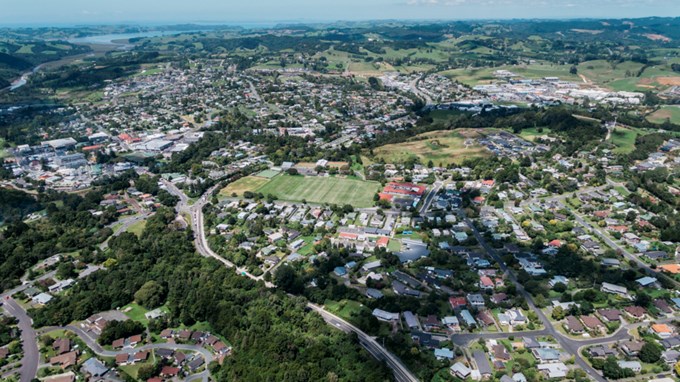An exciting new interactive tool launched today paints Aucklanders a clearer picture of the record growth their city is experiencing.
Findings from the first progress report of the Auckland Plan 2050 Development Strategy released today have been made available in a spatial dashboard format, enabling users to zoom into specific areas of the city to see how it's growing, including dwelling consents and housing typology.
See the interactive dashboard here.
“The development dashboards bring Auckland’s record growth to life,” says Penny Pirrit, Director of Urban Growth and Housing.
“We can see a strong shift towards denser, attached housing. The rate of increase in building consents for apartment and townhouse-style dwellings has almost doubled that of standalone houses in the past year.
“One year into our refreshed 30-year growth plan, we are pleased to see that Auckland is growing up, instead of just out.”
The Development Strategy sets out how Auckland will grow and change over the next three decades. Auckland has taken a quality compact approach to growth and development, which encourages future development in existing and new urban areas, limiting its expansion into the rural hinterland.
Latest data shows record building consents are up 13 per cent from the same period last year to 14,032. Of those, 83 per cent are for dwellings inside existing urban areas, helping to contain the city from sprawling into the rural areas.
“Limiting the city’s spread into rural areas not only helps protect productive land and rural character, it means more investment can go into improving existing infrastructure, connecting Aucklanders to quality public transport and enhancing the vitality of communities.”

Although standalone houses remain the predominant dwelling type region-wide, more than half of the new building consents issued in the existing urban areas are now for higher density housing, which includes apartments, townhouses, flats, and units.
While Auckland Council doesn’t build housing, it does directly influence growth through land use planning, consenting, infrastructure funding and delivery.
The Auckland Unitary Plan removed density controls in some residential zones, and together with the Infrastructure Strategy, it encourages growth in the right places to ensure the necessary services and transport links will be in place to support growing communities.
“We’re enabling more housing to be built more easily and near existing and planned transport networks, giving Aucklanders better choices for where they live and work, says Pirrit.
Report highlights:
- 14,032 new dwellings were consented in the year ended 30 June 2019. A 13 per cent increase from the previous year.
- 83 per cent of all dwelling consents in the Auckland region were within its existing urban areas; 10 per cent in its future urban areas; 7 per cent were in rural zones.
- 76 per cent of all dwelling consents in Auckland’s Nodes* - the City Centre, Manukau, Westgate and Albany – were higher density dwellings
- 56 per cent of all new dwelling consents in Nodes were apartments
- 68 per cent of all new dwelling consents in Development Areas^, were higher density dwellings
- In Waitematā, Albert-Eden and Maungakiekie-Tāmaki local boards, 70 per cent of dwelling consents were for were higher density dwellings
- 10,080 dwellings were issued Code Compliance Certificates (CCC), which means the dwelling is finished ready to be lived in
- 91 per cent of all dwellings issued with a CCC were in the existing or future urban areas
Growing business
- Almost 900,000 square metres of new business floor space was consented in 2018-2019, up 30 per cent from 692,612sqm the previous year
- 54 per cent more business floor space was consented in 2018/2019 compared with 2012/2013
* Nodes are major growth areas critical to accommodating development across Auckland. These areas are based around a significant centre and service large catchments. They encompass surrounding employment and high-density residential areas.
^ Development Areas are urban areas where significant growth is expected in jobs and housing over the next 30 years. These areas were identified based on factors such as ability to accommodate growth and committed projects. Planning and investment will be targeted when growth at scale occurs.


